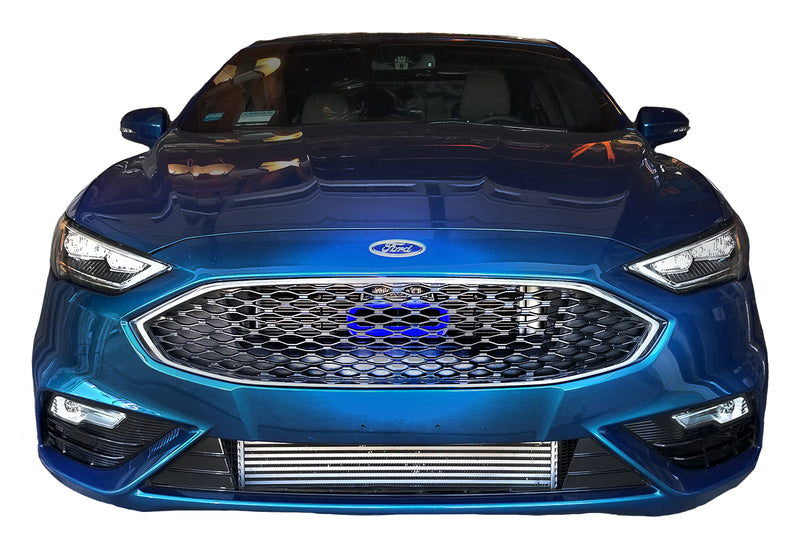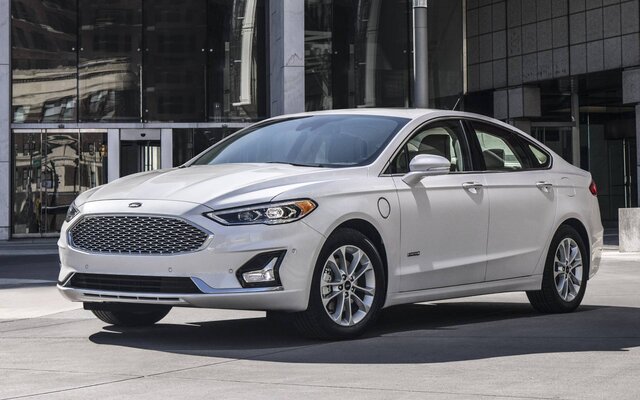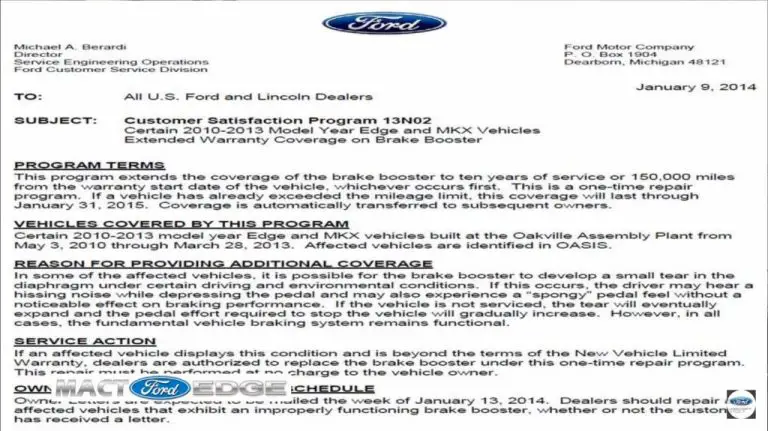Ford Fusion Weight: How Heavy Is It Really?
Key Takeaways
Ever wonder about the Ford Fusion's weight? You're not alone! This post breaks down how heavy a Ford Fusion is, why it matters, and what factors influence its curb weight. We'll explore different trims, model years, and even how a full tank of gas changes things.
Understanding vehicle weight is super important for performance, fuel economy, and even safety. We'll dive into why a car's heft plays such a big role in your driving experience. Plus, we’ll tackle some common questions about the Fusion’s dimensions and what makes it a practical choice for many American drivers.
The Weight of a Ford Fusion: More Than Just a Number
So, you're curious, "how heavy is a Ford Fusion?" It's a great question, and the answer isn't just a single number. Think of it like trying to guess how much a person weighs – it depends on their height, build, and what they had for breakfast! Similarly, a Ford Fusion's weight varies quite a bit depending on its year, trim level, and even the engine under the hood.
Generally speaking, a Ford Fusion typically weighs between 3,400 to 3,900 pounds (approximately 1,542 to 1,769 kilograms). This range covers most of the popular models you’ll see cruising down American highways. It’s a mid-size sedan, so it strikes a nice balance between being substantial enough for a comfortable ride but not so heavy that it feels sluggish.
Why Does a Car's Weight Matter Anyway?
You might be thinking, who cares how heavy a car is? Well, it actually matters a lot! A car's weight, often referred to as its "curb weight," impacts several key aspects of your driving experience.
For starters, it plays a huge role in fuel efficiency. Heavier cars generally need more energy to get moving and stay moving, meaning they'll burn more gas. This is a big deal, especially with gas prices doing their little dance lately. You want to make sure your Fusion isn't chugging fuel just because it's carrying extra bulk.
Beyond fuel economy, weight affects performance. A lighter car can accelerate quicker and handle more nimbly. On the flip side, a heavier car often feels more stable on the highway, especially in crosswinds, and can offer a smoother ride over bumps. It's a trade-off, really.
Safety is another critical factor. While heavier vehicles can sometimes offer more protection in certain types of collisions due to their mass, modern safety features and crumple zones are equally, if not more, important. Still, the sheer physics of two vehicles colliding means weight is always a consideration.
What Factors Influence a Ford Fusion's Weight?
It's not just a one-size-fits-all number for the Ford Fusion. Several elements contribute to its final curb weight. Understanding these can help you pinpoint exactly how heavy a specific Fusion model is and why.
Model Year Matters
Just like your favorite band might change their sound over the years, car manufacturers often tweak designs and materials with each new model year. The Ford Fusion, which had a good run from 2006 to 2020 in North America, saw some significant changes.
Earlier models might be slightly different in weight compared to the later generations. For instance, the second generation (2013-2020) often incorporated more high-strength steel and advanced materials, which can sometimes lead to slight weight reductions or shifts, even as the car grew in size and features.
Trim Levels and Features
This is where things get really interesting. Think of trim levels as different "outfits" for your car. A base model Ford Fusion S will almost certainly weigh less than a fully loaded Fusion Titanium. Why? Because those extra features add weight!
Consider things like leather seats, a panoramic sunroof, a premium sound system with extra speakers and subwoofers, or even advanced driver-assistance systems (ADAS) that include sensors and cameras. Each of these components, though seemingly small, collectively adds pounds to the car.
Engine and Drivetrain Configuration
Perhaps one of the biggest determinants of a Fusion's weight is what's under the hood and how the power gets to the wheels.
Engine Size and Type

A smaller, four-cylinder engine will naturally weigh less than a larger, more powerful V6 engine. For example, a Fusion with the 1.5L EcoBoost engine will be lighter than one with the 2.0L EcoBoost or, in earlier models, the 3.0L or 3.5L V6. Hybrid models also factor in here, as the battery pack adds significant weight.
Front-Wheel Drive vs. All-Wheel Drive
Most Ford Fusions are front-wheel drive (FWD), which is the lighter option. However, many trims also offered all-wheel drive (AWD). An AWD system includes extra components like a transfer case, a rear differential, and additional drive shafts, all of which add considerable weight to the vehicle. This can easily add 100-200 pounds to the car's curb weight.
Here's a quick table to give you a general idea of how different configurations might influence weight:
| Ford Fusion Configuration | Estimated Curb Weight Range (Lbs) | Notes |
|---|---|---|
| Base FWD (e.g., S, SE) | 3,400 – 3,550 | Lighter engine, fewer features |
| Higher Trim FWD (e.g., SEL, Titanium) | 3,500 – 3,700 | More features, potentially larger engine |
| AWD Models | 3,600 – 3,900 | Added components for all-wheel drive |
| Hybrid Models | 3,600 – 3,750 | Battery pack adds weight |
| Energi (PHEV) Models | 3,800 – 3,900 | Larger battery for plug-in capability |
Note: These are estimated ranges and actual weights can vary based on specific options and model years.
What is the average weight of a Ford Fusion?
Based on the various configurations, the average weight of a Ford Fusion typically hovers around 3,600 pounds. This number represents a good middle ground when considering all the different trims, engines, and drivetrains available throughout its production run. It's a solid weight for a mid-size sedan, offering a balanced feel on the road.
What is the curb weight of a 2017 Ford Fusion?
The 2017 Ford Fusion, being part of the second generation, saw some minor updates and continued to offer a variety of powertrains. For this popular model year, the curb weight generally ranges from 3,472 pounds (for a base FWD S model) up to around 3,892 pounds (for a Fusion Sport AWD or Energi Plug-in Hybrid). The specific engine and drivetrain you choose will significantly impact this figure.
Ford Fusion Dimensions: How Big is This Mid-Size Sedan?

While we're talking about how heavy a Ford Fusion is, it's also helpful to understand its physical dimensions. Weight and size often go hand-in-hand, and knowing the Fusion's measurements can give you a better sense of its presence on the road and in your garage.
The Ford Fusion falls squarely into the "mid-size sedan" category, which means it's large enough for comfortable family use but not so enormous that it's a pain to park in tight city spots.
Exterior Dimensions
Let's break down the typical measurements for a second-generation Ford Fusion (2013-2020):
- Length: Approximately 191.7 inches (about 16 feet). This makes it a pretty substantial car, offering good legroom for passengers.
- Width: Roughly 72.9 inches (just over 6 feet), excluding mirrors. This is standard for its class, allowing for decent shoulder room inside.
- Height: Around 58.2 inches (just under 5 feet). This gives it a sleek profile while maintaining good headroom.
- Wheelbase: About 112.2 inches. A longer wheelbase generally contributes to a smoother ride and more interior space.
These dimensions contribute to the car's overall footprint and, by extension, its weight. A larger car requires more material, which adds to the mass.
Interior Space
Even though we're focused on "how heavy is a Ford Fusion," it's worth noting that its dimensions translate into practical interior space. The Fusion is known for its comfortable cabin, offering ample room for five adults, though four would be more comfortable on longer trips. The trunk space is also generous, making it a good choice for families or those who need to haul a fair amount of cargo.
Understanding Gross Vehicle Weight Rating (GVWR)
Beyond curb weight, there's another important weight measurement to know: Gross Vehicle Weight Rating (GVWR). While curb weight is the car's weight with no passengers or cargo, GVWR is the maximum permissible total weight of the vehicle, including the vehicle itself, passengers, cargo, and any accessories.
Think of it as the car's absolute weight limit. Exceeding the GVWR can be dangerous, affecting braking performance, handling, and potentially damaging the vehicle's components. You can usually find the GVWR on a sticker inside the driver's side door jamb. For a Ford Fusion, the GVWR typically ranges from around 4,500 to 5,000 pounds, depending on the model and year. This means you can comfortably load up your family and a decent amount of luggage without worry.

Does a full tank of gas affect car weight?
You bet it does! While the curb weight doesn't include fuel, the GVWR accounts for it. A gallon of gasoline weighs around 6.07 pounds. A Ford Fusion typically has a fuel tank capacity of about 16.5 to 18 gallons.
So, a full tank of gas can add roughly 100 to 110 pounds to your Fusion's weight. It might not seem like much, but it's definitely a factor, especially when considering fuel economy and overall load.
Is a Ford Fusion a heavy car?
Compared to subcompact cars, yes, a Ford Fusion is a moderately heavy car. However, within its segment – the mid-size sedan category – its weight is pretty standard. It's heavier than, say, a Honda Civic, but comparable to a Toyota Camry or a Honda Accord.
Its weight contributes to a solid, stable feel on the road, which many drivers appreciate, especially on long highway drives. It feels planted and less susceptible to being pushed around by wind or passing trucks.
Ford Fusion's Place in the Market: Practicality and Performance
The Ford Fusion was a popular choice for many American families and commuters for a reason. Its weight, dimensions, and overall design contributed to its reputation as a practical yet enjoyable vehicle.
It offered a comfortable ride, decent fuel economy (especially the hybrid models), and a spacious interior. The availability of AWD on many trims also made it a strong contender for those in colder climates, adding to its versatility. While Ford has shifted its focus away from sedans in the North American market, the Fusion remains a reliable and affordable used car option.
Frequently Asked Questions
Q1: What is the typical curb weight of a Ford Fusion?
A1: The typical curb weight of a Ford Fusion ranges from approximately 3,400 to 3,900 pounds (1,542 to 1,769 kilograms). This range depends on the specific model year, trim level, engine size, and whether it's front-wheel drive (FWD) or all-wheel drive (AWD). Base FWD models tend to be on the lighter end, while higher trims, AWD models, and hybrid/Energi versions are on the heavier side due to added features and components.
Q2: How much does a 2019 Ford Fusion weigh?
A2: A 2019 Ford Fusion generally weighs between 3,472 and 3,892 pounds. For instance, a 2019 Fusion S FWD might be around 3,472 lbs, while a 2019 Fusion Sport AWD could be closer to 3,892 lbs. The Hybrid and Energi models also fall within this heavier range due to their battery packs.
Q3: Does the weight of a Ford Fusion affect its fuel economy?
A3: Yes, the weight of a Ford Fusion directly affects its fuel economy. Heavier vehicles require more energy to accelerate and maintain speed, which translates to burning more fuel. This is why lighter trims and engine options typically offer better MPG ratings compared to heavier, more powerful or AWD versions. Every pound counts when you're trying to save at the gas pump!
Q4: What is the difference between curb weight and gross vehicle weight rating (GVWR) for a Ford Fusion?
A4: Curb weight refers to the weight of the Ford Fusion itself, including all standard equipment, fluids (like oil and coolant), and a full tank of gas, but without any passengers or cargo. Gross Vehicle Weight Rating (GVWR), on the other hand, is the maximum permissible total weight of the vehicle when it's fully loaded. This includes the car's curb weight plus the weight of all passengers, cargo, and any added accessories. For a Ford Fusion, the GVWR is typically in the 4,500 to 5,000-pound range.
Q5: Is a Ford Fusion considered a heavy car for its class?
A5: Within the mid-size sedan class, the Ford Fusion is considered to be of average weight. It's not the lightest, nor is it the heaviest in its segment. Its weight contributes to a solid, stable, and comfortable ride, especially on highways, which many drivers appreciate. Compared to smaller compact cars, it would be considered heavy, but it's well within expectations for a vehicle of its size and features.
Conclusion
So, when you ask "how heavy is a Ford Fusion," you now know it's not a simple answer. From its model year to its engine, drivetrain, and even the fancy features you choose, everything plays a part in its final curb weight. Typically ranging from 3,400 to 3,900 pounds, the Fusion strikes a comfortable balance for a mid-size sedan, offering a stable ride without being overly bulky.
Understanding these weight factors is super helpful, whether you're eyeing a used Fusion, curious about its fuel economy, or just want to appreciate the engineering behind your ride. What's your experience with the Ford Fusion's weight and performance? Share your thoughts in the comments below – we'd love to hear from you!








